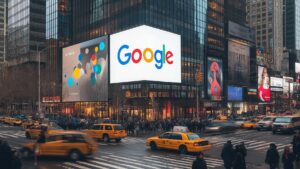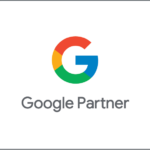You want to get more out of your Google Ads campaigns? With the right optimizations, you can improve your visibility in search results, increase your conversion rate and thus maximize your return on investment (ROI).
This comprehensive guide provides 7 tips on how to optimize Google Ads campaigns to improve visibility and conversion.
#1 - Have clear goals
Specific goals should always come first. And no, "make more sales", "generate more leads" or "brand awareness" are not specific goals. They are good starting points. But it is better if we go into more detail.
Even if the goals are obvious to you, write them down once. This will not only help you to gain clarity. Collaboration with your team or your Google Ads agency will also run much more smoothly if you can communicate your goals precisely.
Even with a Online store you can be more specific than with the rather bold target formulation "generate a positive ROI".
Our #1 tip for target formulation with Google Ads: Think in campaigns. Because this is also how the Google Ads account is built up.
The SMART method is ideal for formulating goals. SMART is an acronym for Specific, Measurable, Attractive, Realistic and Time-bound.
Examples:
- Would you like to make more sales? Then a good place to start is with Campaigns for high-converting products to start.
- Do you have a stock full of one product? Start a sales campaign for this one product.
Possible target formulations
- The goal of our Google Ads campaign is to increase the sales figures for our product "Powerseller 2000" by 25% within the next 8 weeks compared to the previous period. To achieve this, we want to generate attention and clicks with display campaigns and then use retargeting to bring users back to the store and convert them.
- Our aim is to significantly reduce the stock of our "Storageguardian 3000" within the next 6 months by carrying out a targeted sales campaign. The aim is to sell 500 products. We would like to use the high search volume around "Guardian" with search campaigns
Your first step should therefore be to clearly define your goals and write them down. This will help you to review them regularly and keep them in view. This way, you can regularly check whether you are still on the right track.
#2 - Know your target group
A key aspect of successful marketing strategies is knowing your target group. Generic ad copy such as "Take your fitness to the next level" or "Quality for 60 years" often reveal that the advertiser doesn't really know their potential customers. These phrases don't speak directly to anyone and often get lost in the sea of advertising.
To be truly effective, you need to find out who your target audience is. What are their needs, desires, challenges and interests? The better you understand these, the more targeted and appealing you can make your advertising messages. A well-defined target group enables you to offer customized solutions that are precisely tailored to the needs of your customers. This leads to better ad performance.
Let's stay with the fitness example: Instead of using generic slogans ("Take your fitness to the next level"), you could focus on specific customer segments, such as professionals who want to work out after work or parents who want to integrate fitness into their hectic everyday lives. With targeted ad texts such as "Effective 30-minute training for professionals" or "Stay fit, even with children", you can speak directly to the needs and life situations of your target group.
By tailoring your advertising messages to the specific needs and desires of your target audience, you increase the likelihood that your messages will be heard and ultimately lead to more engagement and conversions. So know your target audience - it's the key to optimizing your ads and ultimately the success of your business.
#3 - Have the complete customer journey in view
While Google Ads are an important tool to generate awareness and win back users, it's only one part of the whole process.
The journey of your (potential) customers is becoming increasingly complex. A few years ago, you could convert users from Google searches directly into buyers with a single click. Today, significantly more touchpoints are required in the customer journey.
Customers rarely buy at first contact. Many competitors offer similar products or services. Building trust (e.g. through the brand) is becoming increasingly important. You can achieve this by generating multiple points of contact such as newsletters and social media, Websiteadvertising, stores, apps or others.
To be truly effective, you need to understand and optimize every stage of the customer journey.
The AIDA model can serve as a guide here: Attention, Interest, Desire & Action.
Attention means that you generate attention. For example, through awareness campaigns.
You can arouse interest with a convincing landing page, for example.
You must now awaken the desire. Retargeting campaigns, YouTube videos, social media posts or newsletters can be used here (again). Your customers are now considering whether they really need your product or service. Factors such as customer reviews, price comparisons, detailed product information and convincing marketing also play a major role here.
And then comes the purchase (action).
But even after the purchase, the journey is not over. Customer service, after-sales support and collecting feedback are crucial to turning one-time buyers into loyal customers. Through email marketing, customer surveys and loyalty programs, you can strengthen the relationship with your customers and turn them into returning buyers.
In short, having the complete customer journey in mind means looking beyond just advertisements. It's about creating a comprehensive experience that guides and supports customers every step of the way. By understanding and responding to the entire customer journey, you create a stronger, lasting relationship with your customers, which ultimately leads to higher customer satisfaction and increased sales.
Your SEA ads are an important building block. But they are rarely sufficient on their own.
#4 - Landing pages that convert
If your ads are not converting as expected, the problem is not always with the ads themselves.
Sometimes it is the landing pages that are not optimally designed and therefore do not lead to the desired conversion. An effective landing page is crucial to converting the interest generated by your ads into actual action - be it a purchase, a registration or an inquiry.
What makes a good landing page? First of all, it should be targeted and precisely tailored to the needs and interests of your target group. The content must be clear, concise and relevant. Avoid distractions and make sure that the focus is on the main message and the call to action.
The user experience on your landing page also plays a decisive role: It should load quickly, be mobile optimized and have a simple, intuitive design. Every additional click or every second of loading time can lead to the loss of potential customers.
It is also important that your landing page appears trustworthy. Use customer reviews, seals of approval or case studies to create credibility. Visitors need to feel safe when they leave personal information or make a purchase.
Also, don't forget to regularly monitor and analyze the performance of your landing pages. A/B tests help to identify which elements are most effective and where improvements are needed.
In short, the landing page is a crucial element in the marketing funnel. If implemented correctly, it can significantly increase the effectiveness of your online advertising and ultimately lead to higher conversion rates. Therefore, invest time and resources in creating and optimizing your landing pages - it's worth it!
#5 - Inspect & Adapt
"Inspect & Adapt" means monitoring the performance of your ads and identifying opportunities for optimization.
For example, the first creative idea for a campaign is not always the best. You shouldn't let this discourage you. The key to success is to carefully analyze the results of your campaigns (Inspect), learn from them and then adjust your strategy accordingly (Adapt).
To do this, you need to regularly review the performance of your campaigns. A marketing dashboard helps you to understand key metrics such as click-through rate, conversion rate and ROI. These figures tell you what is working and what is not.
But simply looking at the figures is not enough. Try to understand the reasons behind the data. Why do people click on your ad but then don't buy? Is your landing page not convincing enough, or does the ad perhaps appeal to the wrong target group? Questions like these will help you to improve the effectiveness of your campaign.
The next step is to "adapt". Based on your findings, change aspects of your campaign. This could look like this: Change the message of your ads, test different designs or target your ads to a different audience. Sometimes small adjustments are all that's needed to get better results.
Remember that marketing is a continuous process. It's not about doing everything right once, but about continuously learning and improving. "Inspect & Adapt" is a powerful principle that helps you stay flexible and keep your marketing strategy up-to-date and effective.
#6 - Know your KPIs and key figures
CR, ROAS, CTR, AI or CPC. This is not a rap by the Fantastic Four - sincerely yours truly. Rather, these are important key figures that you should use to optimize your Google Ads.
The KPI (Key Performance Indicator) is the key figure that can be used to measure target achievement (see Tip#1). These can be conversions such as leads or sales. But they can also be ad impressions or clicks to generate awareness.
Key figures are accompanying numbers to your KPIs. If conversion is your KPI, the conversion rate (CR) could be an associated metric. Try to improve your conversion rate to increase conversions.
ROAS (Return On Ad Spend) is also a common key figure. It indicates the relationship between the revenue generated by advertising expenditure and the costs of this advertising. It is usually used to evaluate the effectiveness and profitability of online advertising campaigns. The ROAS, expressed as a ratio or percentage, shows the revenue per euro invested.
The formula for calculating the ROAS is
ROAS = revenue from advertising / cost of advertising
For example, if a campaign incurs EUR 5,000 in advertising costs and generates sales of EUR 15,000, the ROAS would be:
ROAS = 15,000 euros / 5,000 euros = 3
This means that for every euro spent, 3 euros in revenue was generated. A higher ROAS indicates a more efficient advertising campaign, while a lower ROAS indicates that the campaign may not be cost-effective.
Your takeaway: Based on your goals (see #1), think about which key figures you can use to monitor the achievement of your goals.
#7 - Optimize your keywords
A common mistake we see with client accounts is too broad a selection of keywords. The key to success is a well-founded Keyword research and subsequent selection.
Think carefully in advance about which search queries (= keyword) your target group (see #2) could use to go to Google to solve their problem or fulfill their wish. Don't be too broad (avoid general keywords) and also define negative keywords.
Start with a lean set of around 10 - 20 well-chosen keywords. Only expand this if necessary, for example if the volume remains too low. Replace keywords that do not contribute to the target direction (#5). If possible, start with exact match, but at most with phrase match. Broad Match should be avoided at the beginning.
Make sure that you select the right keywords that match the content of your landing page - otherwise the quality factor of your ads will also suffer.
Practical example: Let's imagine you sell handmade, ecological wall paints for interiors via your online store. You decide to launch a Google Ads campaign to increase your sales.
To do this, select the keyword "buy paint". The keyword poses a few problems.
Too broad: This keyword is too general and could be searched by users interested in a variety of paint products, from artists' paints to automotive paints. It's not specific enough to lead users to your site who are explicitly looking for eco-friendly interior wall paints.
Does not match the landing page: Your landing page focuses on the benefits and uniqueness of your handmade, organic wall paints. Users searching for "buy paint" may expect a broader selection of paint products and could be disappointed if they are directed to a page that focuses exclusively on one niche.
Result: The likelihood that visitors to the landing page will not find what they expect or are looking for is high, which can lead to a low conversion rate and a low quality score for the keyword. In addition, the cost per click (CPC) could be unnecessarily high as the broad keyword is likely to have more competition.
A better alternative could be the keyword "ecological wall paint inside".
More targeted: This keyword is more specific and attracts users who are looking for exactly what you are offering.
Better match with the landing page: Users searching for this keyword will find relevant information and products on your landing page, increasing the chances of conversions.
Higher quality score: A better match between keyword, ad and landing page can lead to a higher quality score, which can result in lower cost per click and better ad placements.
Free offer: Have your Google Ads account checked by professionals
These 7 Google Ads tips are a good starting point for optimized Google ads.
But there is of course much more to consider.
- The different types of bids and budgeting
- The use of ad extensions
- The importance of conversion tracking and analysis
- The optimal use of target group signals
- Compliance with the Google Ads guidelines
And these are just a few examples. But all of this is of course beyond the scope of this article.
But if you want to take action now to make more sales with Google Ads in the future, then these are your next steps:
- Visit www.webraketen.io/google-ads-angebot/
- Apply for a free account check there
- Get individual tips for Google Ads optimization
The check will be completely free of charge. If we see potential for a joint collaboration, we may make you an offer.





